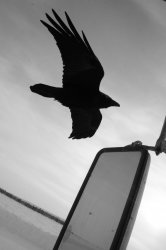I'm glad you prefer whatever you prefer - it's definitely why art in all it's various forms can find fans and consumers. Certainly I am not going to discredit Valdore's work, or style, as he is very good at what he does. However, any artist should be comfortable with feedback, including negative. Sure, art is primarily the vision of the artist, but in the end in order to be recognized as "good" or "bad" it requires opinions of the public. Some artists make money, some don't. It isn't really a matter of "quality" because art is a subjective concept. It would take a lot of space to even start on the subject of what art is. A monkey scribbling doodles, then it becomes somehow collectible. Art collectors compete to own pieces, thus legitimizing the "art." But, is it really the art itself, or the cultural interest in the art expressed by a celebrity-obsessed culture. Are a famous person's photographs better than a non-famous person's? Which would be more collectible? Why? Are photos of famous people more interesting than ordinary people? Are they more marketable, more valuable? Is documentary/photojournalism ever considered art? Of course it is, if it can be seen as having a certain merit socially and historically and stylistically. But there are inherent limitations in the "creative license" of anything considered journalism - to not deceive, to not manipulate the truth, however boring you might consider that. There are reasons why photojournalists who couldn't help themselves by spicing up their images ended up fired - even something like posing the subjects for an "improved" version of a photo they already had captured "live." It's all about integrity in photojournalism - the truth. Cameras can always lie by omission, life can be modified by use of composition techniques and wide-angle/telephoto views, but at least the notion that the images reflect what it was like. Post processing is certainly allowed, but if every picture in a newspaper suddenly began having dramatic skies and obvious "style sheets" imposed on the look of the pictures, people would become suspicious that underneath all of this beauty on the page perhaps something was added, or removed. It's a slippery slope, but primarily applies to photojournalism - not art or commercial photography.
If
photojournalism bores you, you haven't really looked at much of it. National Geographic certainly comes to mind. Good, strong photojournalism can be among the most compelling and touching images out there. The problem is that it is becoming a dying "art." Basic shots on deadline, run as small and b/w, grip 'n grins for local public relations in small communities, high school activities (ordinary life...) often only interesting to those in the pictures. Local city council meetings. High school sports in dark gyms, rodeo queen inaugurations in small towns. Yes, most of this can be very boring to the non-participants or non-locals. Yet, in the hands of a good photojournalist who is given the space and time to compose a multi-photo feature, you can also find magic. It's not easy, but I contend that if done the right way, photojournalism is far from boring. It's about using those tools of curiosity, attention to detail, superb composition given the circumstances, "being there" so you can be there, knowing enough about the subject to make pictures that make sense, not just look pretty. I was in a landscape gallery in Sedona Arizona a few years ago, and the photos were absolutely gorgeous. The large prints cost several thousand dollars, and were stunning in their light and detail. But, after spending a half-hour in the gallery, suddenly, and without warning... I became bored. Too much candy. Too much of the same thing. I needed the pictures to be about something unique, but they were all about the same subject - landscape and light. Extremely well done, of course. But my taste buds were de-sensitized.
However, exhibits on photojournalism I've seen, from the University of Arizona to the University of Texas to the Portland Art Museum to exhibits from the National Press Photographers Association have left me captivated. I suggest visiting the
NPPA website, and check out the still photography award winners and tons of other information on a "boring" subject.




















